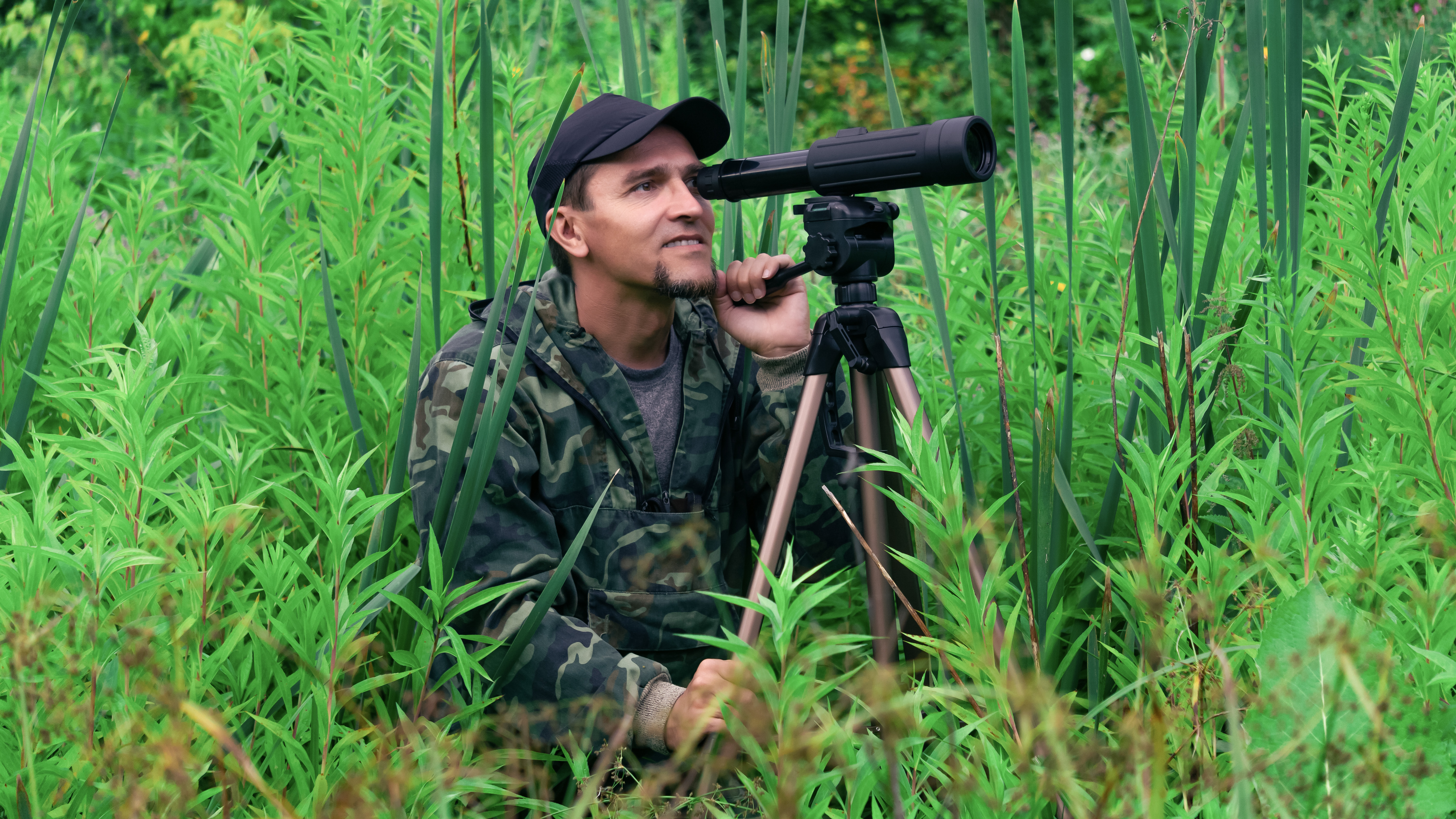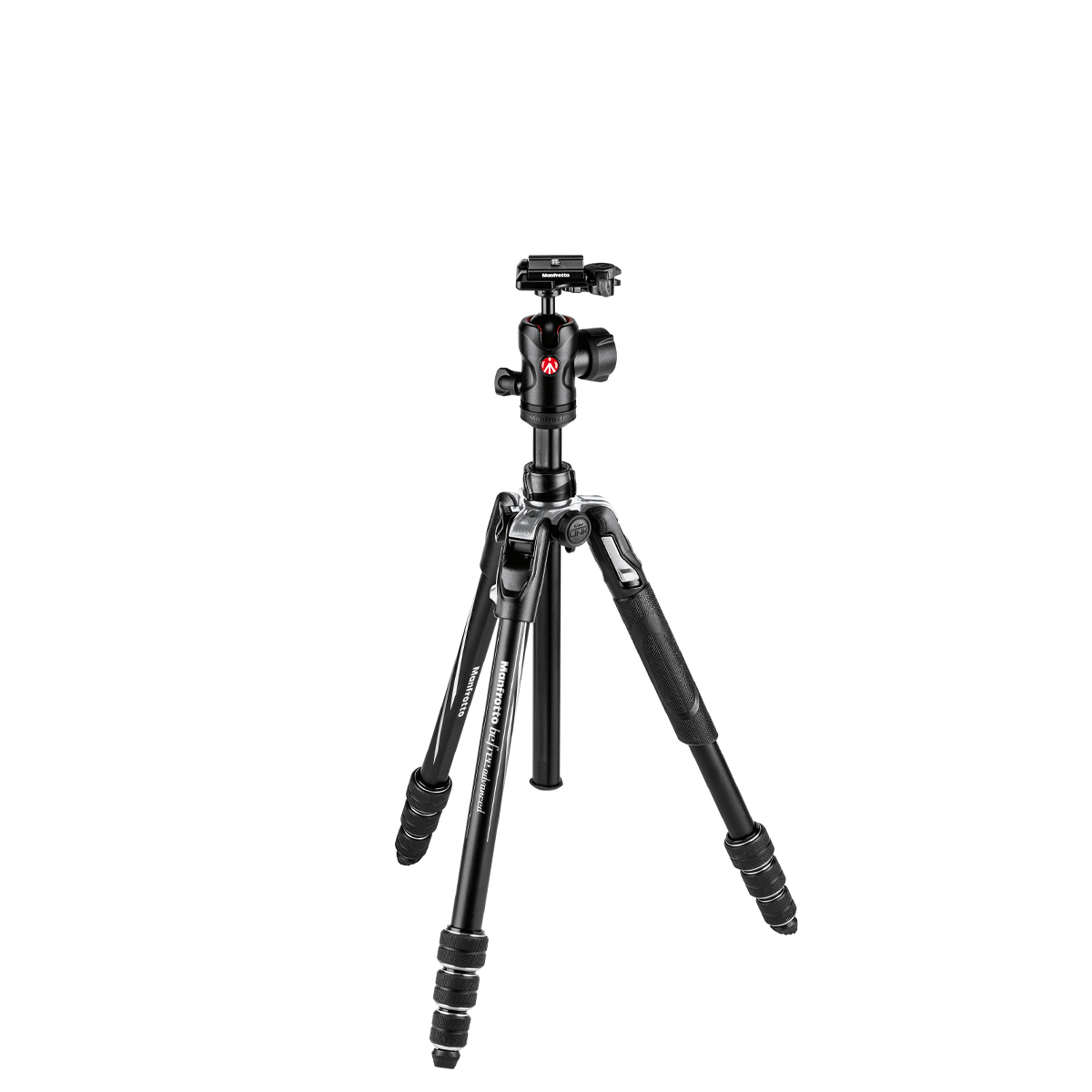The best spotting scope tripods in 2025: here are my top-rated scope supports
The best spotting scope tripods keep your high-powered optics secure and supported whilst watching wildlife or the stars

Choosing the best spotting scope tripod can be tricky. It can be tempting to go for something ultra-cheap, but this can be a false economy. Spend too little, and you can end up with a flimsy thing that falls over at the first gust of wind, but spend too much, and you could be buying a bulky tripod stuffed with features that you don't really need.
It's all about balance, and that's what I've tried to keep in mind when coming up with this list. A spotting scope user needs stability most of all – a rock-solid support for birding, terrestrial viewing, or studying the night sky. Something that folds up well for easy transport to your spotting location can also be handy.
I've assembled my picks of the best tripods for the best spotting scopes by looking at the tripods the Digital Camera World team has reviewed and highlighting the models that have most impressed me. While I reckon that the best choice is a full-sized tripod that reaches head height, you may also want to consider a travel tripod if mobility is a priority, so I've been sure to include both options.

Jamie is the editor of WhenIsTheNextEclipse.com, and travels the world watching every eclipse he can and photographing the night skies. He’s our go-to expert on optics, such as spotting scopes and solar binoculars.
The Quick List

This travel tripod pairs beautifully with a spotting scope, thanks to a head that delivers fluid movement and a sturdy build beneath.
Read more below…

Combining a lightweight build with amazing capacity and impressive maximum height, this is an excellent tripod for the serious spotter.
Read more below…

While the head and carrying bag cost extra, and it's not cheap to begin with, this rock-solid tripod is an outstanding choice for heavy scopes.
Read more below…

This eminently affordable option has an integrated pan-and-tilt head that teams up well with a spotting scope, and reaches a good height too.
Read more below…

This rig reaches a heady 186cm, and includes a fluid ball head and handle to allow you to line up your scope with precision.
Read more below…

This travel tripod packs down pretty small, but still reaches a good height, while easy-to-use locks make setup a pleasure.
Read more below…
Best spotting scope tripods
Why you can trust Digital Camera World
Best spotting scope tripod overall
Specifications
Reasons to buy
Reasons to avoid
A flagship member of Manfrotto’s lightweight Befree line-up, this light travel tripod pairs very well with a spotting scope. Included in the kit is Manfrotto’s compact Befree 3-Way Live Head: its hydraulic damping system is made for videographers, helping them smooth, steady movements, and it’s a good complement to a spotting scope. The kit also includes a 200PL-PRO quick-release plate (which can take both Manfrotto RC2 and Arca-Swiss attachments).
The tripod itself has a lever leg-locking system, plus a strong center column to extend the maximum height to a respectable 150cm.
See our full Manfrotto Befree 3-Way Live Advanced review
Best premium spotting scope tripod
Specifications
Reasons to buy
Reasons to avoid
If you’re schlepping a big spotting scope around, you won’t also want to be carrying a heavy tripod. But you’ll sure need one that can reliably support your scope, particularly at high magnifications. The 3 Legged Thing Winston 2.0 tripod should definitely be on your list to consider. Don't be fooled by its fairly small and tidy dimensions – this tripod is capable of supporting up to 40kg of payload! That's much, much more than even the largest spotting scopes are going to require.
This isn't quite as high-end as the company's Legends range of tripods, but for my money it offers the best bang for your buck in the 3 Legged Thing range. Its three-section legs and single central column give it rock-solid stability, and with 194cm of maximum height (or even 202cm in monopod mode), it can cater for even the most abnormally tall of spotters.
Versatile and beautifully made, the 3 Legged Thing Winston 2.0 is a fantastic premium tripod for any committed spotter. And while it's pricier than many others on this list, for a carbon fiber tripod, it's excellent value!
See our full 3 Legged Thing Winston 2.0 review
Best tripod for large spotting scopes
Specifications
Reasons to buy
Reasons to avoid
While it is pretty pricey, and you'll need to factor in the cost of the head, the Manfrotto 055 MT055CXPRO3 is solid as a rock. It's a simple, straightforward tripod, lacking the bulk-reducing swing-up legs of other travel tripods, but all the more sturdy for it. It's easy to set up in seconds, and if you're toting a larger spotting scope, it could be worth the investment.
Equipped with a pivoting center column, the 055 MT055CXPRO3 (catchy name, eh?) is wonderfully intuitive in use. With some tripods, you often need to factor in a good chunk of time figuring out how it works when you first get your hands on it, but Manfrotto's creation is so darn intuitive. From the leg angle mechanisms to the pivoting column, it all flows beautifully. And with a 20kg load rating, it's well-equipped to take even the heaviest scope.
See our full Manfrotto 055 MT055CXPRO3 review
Best budget spotting scope tripod
Specifications
Reasons to buy
Reasons to avoid
An entry-level aluminum tripod with a built-in fluid pan-and-tilt head that moves through 360º, the Svbony SA402 is an ideal partner for a spotting scope. Its all-in-one design will only suit those who plan to pair it with a spotting scope near-permanently, though elsewhere it’s got a lot going for it for outdoor use.
Weighing a mere 2.2kg/4.85lbs, it comes with a nice shoulder bag complete with an adjustable shoulder strap. It reaches an impressive 164cm/64.5” thanks to an extendable center column and, in my tests, felt sturdy enough with a spotting scope mounted on top. I noticed some slight droop on the tilt axis, but nothing serious.
See our full Svbony SA402 review
Best tall spotting scope tripod
Specifications
Reasons to buy
Reasons to avoid
The AD-01 3751 isn’t the strongest tripod around, but if you’re packing a relatively lightweight spotting scope, then its affordability, ease of use, and precision movements make it a good choice. It may weigh just 2.86g/6.3lbs and come with a shoulder bag, but it’s got a lot of girth, so is not the easiest tripod to travel with. Nor is it manufactured with the finest quality materials; it looks a little flimsy. However, its three-section double-shaft leg design and three-pronged spreader between the first and second stages add some extra stabilization, and its maximum height is a generous 186cm.
Crucially, it comes with a fluid two-way ball head (complete with leveling bowl base) and a detachable pan handle that makes precision movements possible. It’s compatible with DJI RS 2 and Manfrotto quick-release plates. There’s even a hidden magnetic hex key to make it easy to attach to the bottom of a spotting scope while you’re out in the field.
See our full SmallRig Heavy-Duty Fluid Head Tripod review
Best spotting scope tripod for travel
Specifications
Reasons to buy
Reasons to avoid
Given the outdoorsy nature of spotting scopes, it’s tempting to use a travel tripod, but their reliance on an extendable center column can make them unstable. Not so the Manfrotto Befree Advanced Twist, whose center column adds an extra 23cm/9” while retaining stability. That’s largely thanks to a twisting lock at its base – hence the name – though I also loved its M-lock four-section legs. With a maximum height of 150cm, the tripod folds down to a convenient 40cm, making it easy to pack for a trip.
The included ball head is excellent, though it’s one area that may need upgrading if you’re after more precision, in which case you should also check out the Digital Camera World guide to the best ball heads.
See our full Manfrotto Befree Advanced Twist review
How to choose the best spotting scope tripod
How much should I spend on a spotting scope tripod?
The price you’ll pay will depend on the brand and the quality of the engineering. Tripod kits that comprise a set of legs and a head can range in price from a few dollars / pounds to well in excess of $1,000 / £1,000 for a top-of-the-range model. That’s a huge range, and each extreme is worth avoiding. Generally speaking, the best spotting scope tripods start at around $150 / £150, though models that make use of carbon fiber to lighten the load will bump up the price.
Aluminum or carbon fiber?
The pricier material is carbon fiber, which adds incredible strength to a lightweight design. Aluminum tripods are usually more affordable while remaining light enough for mobility, and are a sensible choice for most spotting scope owners.
How much height do I need?
Spotting scopes are much easier to use at head height or thereabouts, although the best travel tripods usually achieve that by using a retractable center column, which can introduce some instability. Also, look for rubber feet and spikes for coping with different surfaces (you’ll typically need to physically swap out one type of foot for the other).
Check the folded length
The weight of a tripod is important if you’re going to carry it any distance, but so is its folded length. If it’s too long to strap to your bag, and it’s unwieldy when climbing over stiles and the like, then it’s going to put you off taking it anywhere. Many so-called ‘travel’ tripods have legs that fold upwards for storage and completely enclose the head. This makes them smaller and neater when folded and easier to carry around.
How many leg sections?
Tripod legs may have three, four, or five sections. A larger number of sections means the tripod is shorter and more portable when it’s folded, but it will usually take a little longer to set up and may well not be quite as stable.
What type of leg locks?
These come in two main types: twist locks and flip locks. Twist locks take up less space and are generally a little quicker to use – you can often unlock all the leg sections in a single movement when you’re setting the tripod up. Flip locks are operated individually and may be a bit slower. Try both types to see which you prefer.
Leg angles
Most tripods have legs that can be angled independently, which is particularly useful when working on sloping sites or in cramped areas. The standard leg angle will be fine for regular use, but it’s often useful to splay one or more legs outwards on uneven surfaces or to rest them on, say, walls. Splaying out all three legs will allow you to shoot from a much lower angle, although this is less of an issue when used to support a scope.
What type of head should I get?
The most suitable tripods for spotting scopes tend to have a pan-and-tilt or three-way head, which will help you lock the pan axis or the tilt axis and move the other independently. They make it easy to make small adjustments to get a subject perfectly into the spotting scope’s field of view. That’s also true of slower but smoother fluid heads, which are aimed at video creators. Pistol grip tripod heads are even easier to use.
Some spotting scope owners will be happy with ball heads – but while they do make it quicker to get your spotting scope roughly lined up with your subject, it can be tricky to then get that subject precisely into the field of view.
Attaching your scope
Most tripods are sold with heads, and most heads have a quick-release plate so that you can detach the scope in moments. Arca-Swiss-compatible plates are by far the most common type, meaning you can swap between different tripod heads, even if they're made by different manufacturers. However, some makers, notably Manfrotto, have bespoke quick-release plates, which can be a nuisance if you have two or more tripods from different makers.
Extra features
Detachable monopod legs: These sound really useful – a detachable leg you can then screw into the center column to make a monopod. In practice, I find these often lack the rigidity of a 'real' monopod unless you're starting with a particularly substantial tripod.
Center column: Not all tripods come with a center column, but most do. You can extend this upwards to increase the overall height, although this introduces extra wobble. On some tripods, the center column can be rotated to produce an angled boom, which, while useful in photography for overhead shots and macro work, isn't of great concern when using a spotting scope.
Bowl base: This is a video-specific feature that allows you to get the base level without having to make a whole series of tiny adjustments to the leg length. A level base is essential for a video where you want to make panning movements, and the best video tripods come with a bowl or leveling base as standard. Again, this is not an issue if you're using your tripod solely to support a spotting scope.
Types of feet: Rubber feet are fine on most surfaces but best on hard ground. Metal spikes are good for digging into soft and uneven ground. Some tripods have rubber feet, which can be screwed back to reveal spikes hidden within.
How we test tripods
We measure the maximum operating height of each tripod and its folded height for carrying, complete with head attached. We also measure the combined weight of each set of tripod legs and head, using electronic scales, and measure the diameter of all leg sections, from the widest to the thinnest, using digital calipers.
We check the ease of use, smoothness and precision of all available adjustments in each set of tripod legs and heads. This ranges from adjusting leg sections and pivot facilities (where available), to the locking mechanisms of the head, as well as independent pan and friction damping adjustments, where fitted.
To check overall stability, we look for good resistance to flexing and vibrations throughout the whole range of operating heights, including the tallest available settings with the legs and center column fully extended.
Find out more about how we test and review on Digital Camera World
The best camera deals, reviews, product advice, and unmissable photography news, direct to your inbox!

Jamie has been writing about photography, astronomy, astro-tourism and astrophotography for over 15 years, producing content for Forbes, Space.com, Live Science, Techradar, T3, BBC Wildlife, Science Focus, Sky & Telescope, BBC Sky At Night, South China Morning Post, The Guardian, The Telegraph and Travel+Leisure.
As the editor for When Is The Next Eclipse, he has a wealth of experience, expertise and enthusiasm for astrophotography, from capturing the moon and meteor showers to solar and lunar eclipses.
He also brings a great deal of knowledge on action cameras, 360 cameras, AI cameras, camera backpacks, telescopes, gimbals, tripods and all manner of photography equipment.
- Adam WaringGuides Editor






